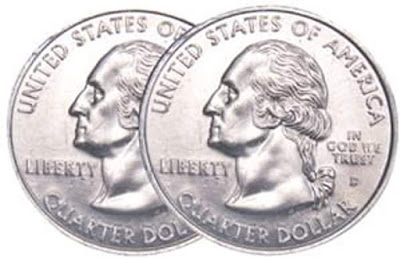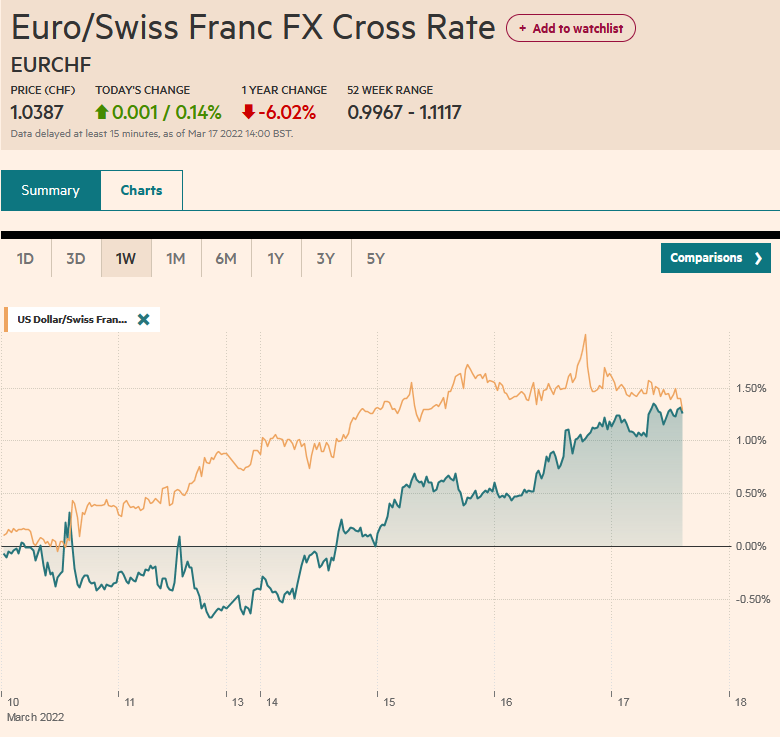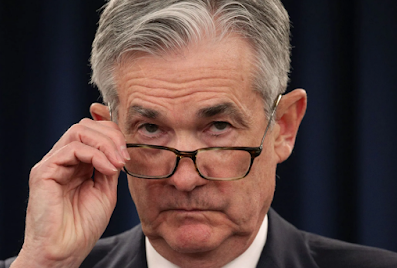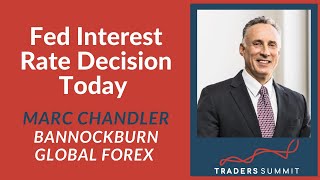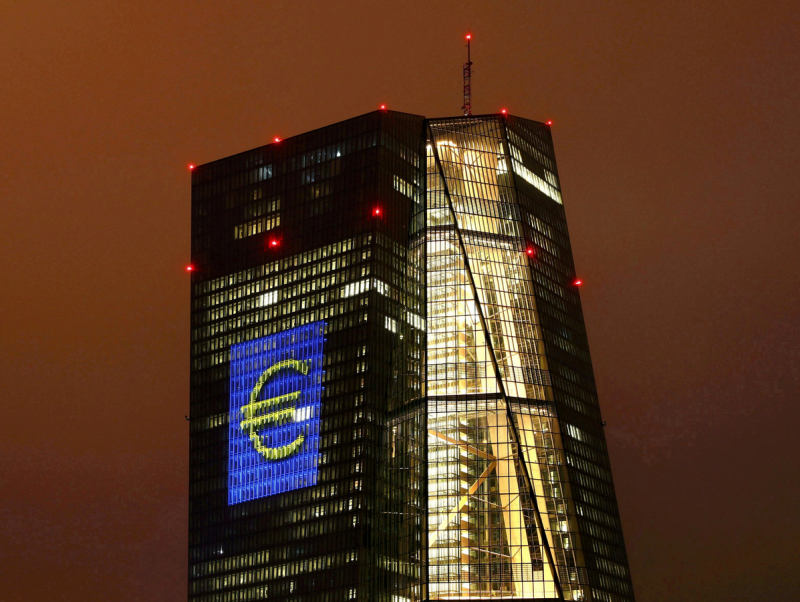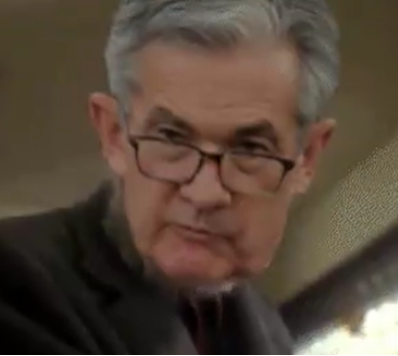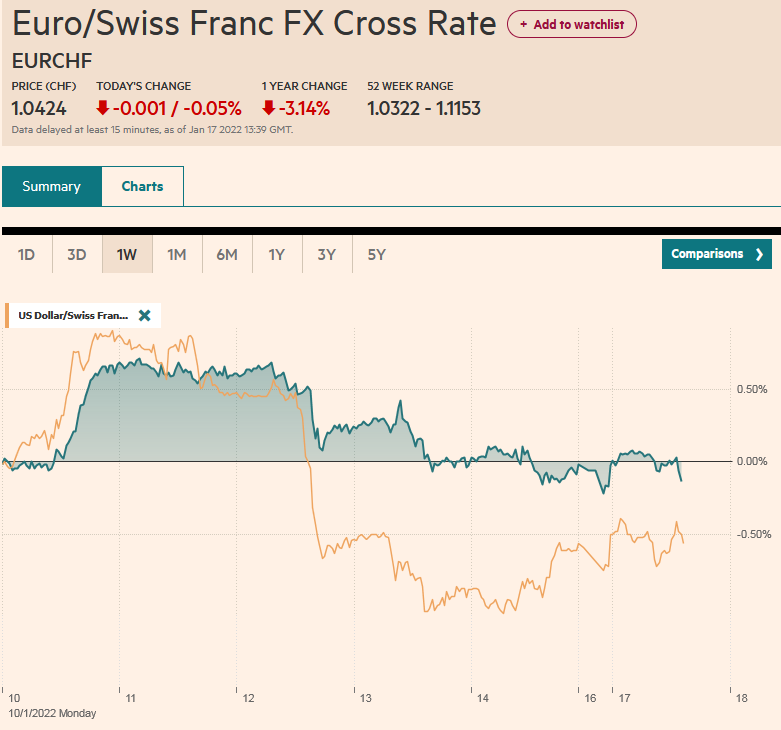Category Archive: 4.) Marc to Market
Yields Jump, Greenback Bid
Overview: Yields are surging. Canada and Australia's two-year yields have jumped 20 bp, with
the US yield up 10 bp to 2.37% ahead of the $50 bln sale later today. The US 10-year yield has risen a more modest three basis points to 2.50%, flattening the 2-10-year yields curve. The 5–30-year curve has inverted for the first time since 2016.
Read More »
Read More »
Caution: Trends in the Foreign Exchange Market
The recent themes in the foreign exchange market continued last week. On the one hand, the dollar-bloc currencies and Norwegian krona trended higher, while the euro, and especially the yen, traded heavier.
Read More »
Read More »
US Jobs, EMU CPI, Japan’s Tankan, and China’s PMI Highlight the Week Ahead
This year was supposed to be about the easing of the pandemic and the normalization of policy. Instead, Russia's invasion of Ukraine threw a wrench in the macroeconomic forecasts as St. Peter’s victories broke the brackets of the NCAA basketball championship pools.
Read More »
Read More »
Cautious Markets after China Disappoints
Overview: Ukraine's Mariupol refuses to surrender as the war is turning more brutal according to reports. Iran-backed rebels in Yemen struck half of a dozen sites in Saudi Arabia, driving oil prices higher. China’s prime lending rates were unchanged. The MSCI Asia Pacific Index, which rallied more than 4% last week, traded heavily today though China and Taiwan's markets managed to post small gains. Tokyo was closed for the spring equinox.
Read More »
Read More »
FX Daily, March 17: Investors are Skeptical that the Fed can Achieve a Soft-Landing. Can the BOE do Better?
Overview: The markets continue to digest the implications of yesterday's Fed move and Beijing's signals of more economic supportive efforts as the Bank of England's move awaited. The US 5–10-year curve is straddling inversion and the 2-10 curve has flattened as the Fed moves from one horn of the dilemma (behind the inflation curve) to the other horn (recession fears). Asia Pacific equities extended yesterday's surge. The Hang Seng led the...
Read More »
Read More »
Fed Delivers Hawkish Hike
The Federal Reserve hiked the Fed funds target rate by 25 bp as widely anticipated. It clearly signaled it was beginning an ongoing hiking cycle. The FOMC statement also indicated the balance sheet roll-off would begin at a coming meeting. The uncertainty posed by Russia's invasion of Ukraine was acknowledged, but the FOMC recognized that in the first instance it boosts price pressures while also weakening growth.
Read More »
Read More »
Marc Chandler: Bannockburn Forex
The Fed Interest Rate Decision Today will be historic. The primary consensus is that they will raise their rates.
Read More »
Read More »
China and Hong Kong Stocks Plummet, Yields Soar
Overview: While the World Health Organization debates about downgrading Covid from a pandemic, the rise China and Hong Kong cases is striking. A lockdown in Shenzhen and restrictions in Shanghai, coupled with a record fine by PBOC officials on Tencent drove local stocks sharply lower. China's CSI 300 fell 3% and a measure of Chinese stocks that trade in HK plunged more than 7%.
Read More »
Read More »
Risk Assets Given a Reprieve
Overview: US equities failed to sustain early gains yesterday, but risk appetites have returned today. Asia Pacific equities had a poor start, with Chinese and Japanese indices losing ground, but the equity benchmarks in Taiwan, Australia, India, and most of the smaller markets traded higher. Taiwan's 1.1% gain is notable as foreign investors continued to be heavy sellers.
Read More »
Read More »
Vladimir Nogoodnik Roils Markets
Overview: The economic disruption seen since the US warning of an imminent Russian attack on February 11 continue to ripple through the capital and commodity markets. Equities are being slammed. Most Asia Pacific bourses were off 2-3% today. Europe's Stoxx 600 gapped lower ad has approached February 2021 levels, orr about 2.6% today. US futures are around 1.5% lower.
Read More »
Read More »
ECB Meeting and US and China’s CPI are the Macro Highlights in the Week Ahead
One of the most significant market responses to Russia's attack on Ukraine is in the expectations for the trajectory of monetary policy in many of the high-income countries, including the US, eurozone, UK and Canada. The market has abandoned speculation of a 50 bp hike in mid-March by the FOMC and the Bank of England. It has also scaled back the ECB's move to 20 bp this year from 50 bp.
Read More »
Read More »
Capital and Commodity Markets Strain
Overview: The capital and commodity markets are becoming less orderly. The scramble for dollars is pressuring the cross-currency basis swaps. Volatility is racing higher in bond and stock markets. The industrial metals and other supplies, and foodstuffs that Russia and Ukraine are important providers have skyrocketed. Large Asia Pacific equity markets, including Japan, Hong Kong, China, and Taiwan fell by 1%-2%, while South Korea, Australia,...
Read More »
Read More »
European Currencies Continue to Bear the Brunt
Overview: Russia's invasion of Ukraine and the global response is a game-changer, as Fed Chair Powell told Congress yesterday. The UK-based research group NISER estimated that world output will be cut by 1% next year or $1 trillion, and global inflation will be boosted by three percentage points this year and two next.
Read More »
Read More »
The Dollar and Yen’s Safe Haven Appeal Slackens
Russia's invasion of Ukraine overwhelmed other drivers of the foreign exchange market. When everything was said and done last week, the odds of a 50 bp hike by the Federal Reserve in the middle of March was little changed slightly above 25%. The odds of a 50 bp hike by the Bank of England have been reduced from a little over 60% before the US government's warning that a Russian attack could happen at any time on February 10 to 36% on February 18.
Read More »
Read More »
Russia’s Military Action Shakes Markets
Overview: News that the separatists were calling on Moscow for military assistance began the risk-off move, and Russia hitting targets across Ukraine has rippled across the capital markets. Equites have been upended. Most bourses in the Asia Pacific region were off 2%-3%, while the Stoxx 600 in Europe gapped lower and is off around 3.5% in late morning dealings.
Read More »
Read More »
FX Daily, January 26: Federal Reserve and Bank of Canada Meet as Risk Appetites Stabilize
After a slow and mixed start in Asia, where Australia and India are on holiday, equity markets have turned higher. Europe's Stoxx 600 is up around 1.9% near midday in Europe, which if sustained would be the biggest gain of the year. US futures are snapping backing too, with the S&P 500 popping more than 1% and NASDAQ by 2%.
Read More »
Read More »
FX Daily, January 17: PBOC Eases, but the Yuan Firms
Overview: Russia is thought to be behind the cyber-attack on Ukraine at the end of last week, but a military attack over the weekend may be underpinning risk appetites today. The dollar's pre-weekend gains are being pared slightly. Led by the Canadian dollar and Norwegian krone, the greenback is lower against most major currencies, with the yen being the notable exception, which is off about 0.2%.
Read More »
Read More »
Is the Dollar Due for a Bounce?
The US dollar had one of its worst weeks in a few months. Although there has been some talk about the historical pattern of weakness after the first Fed hike in a cycle, many participants were surprised. The dollar struggled in the last couple of weeks of 2021, but this seemed to be explained by year-end position squaring amid light interest.
Read More »
Read More »
How the Market Responds to US CPI may set the Near-Term Course
Overview: US stocks built on the recovery started on Monday and Powell's suggestion of letting the balance sheet shrink later this year eased some speculation of a fourth hike this year, which seemed to allow the Treasury market to stabilize.
Read More »
Read More »
Inflation and Geopolitics in the Week Ahead
The Omicron variant may be less fatal than the earlier versions, but it is disrupting economies. The surge in the Delta variant well into Q4 in the US and Europe was already slowing the recoveries. Investors will likely take the high-frequency real sector data with the proverbial pinch of salt until January data available beginning later this month.
Read More »
Read More »










